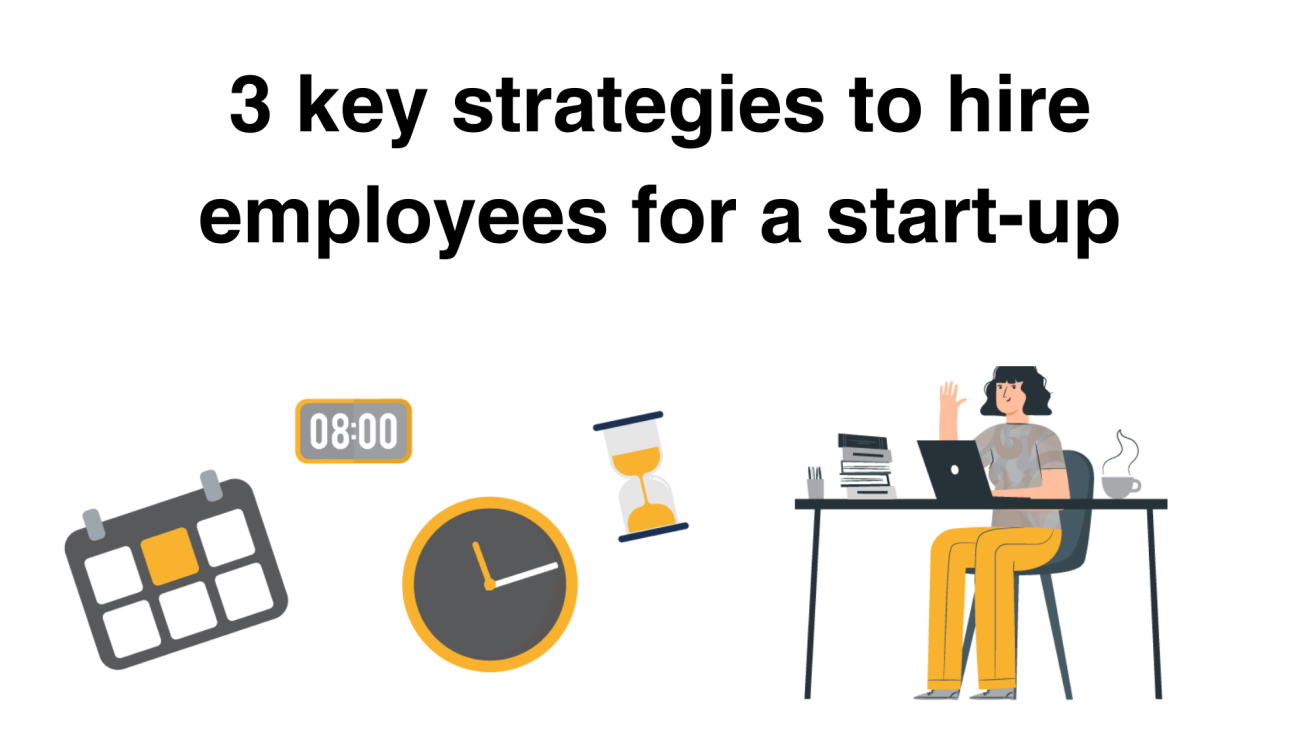3 key strategies to hire employees for a startup
Introduction
Startups usually have to toggle between the uncomfortable space of ‘doing everything by myself’ and the time-consuming effort of hiring people. Most of them might start with the former only to find that they don’t have enough time to do everything that needs to be done or are heading for an early burnout!
In addition, startups and small businesses usually operate with tight budgets. They need to find creative and effective ways to hire the right people without wasting too much time, effort and resources.
According to the 2016 Human Capital Benchmarking Report, the Society for Human Resource Management estimated that companies spend an average of 42 days to fill a position and $4,129 per hire.
That can burn quite a hole in your pocket! And hiring the wrong talent can prove more expensive!
The Strategies
To help you use your time and resources effectively, here are three key starting points that you can explore.
-
Look beyond job portals
- Using social media: Social media is a really powerful tool that costs little effort and almost no money. As an entrepreneur of a small enterprise or a start-up, you can easily set up your personal and company accounts on most social media platforms without paying for it. The key here is to be active on these platforms constantly so that you can project yourself as a thought leader and project your organisation as a coveted place to work in.
Understand what the top talent is looking for - what motivates them, what inspires them, what are their aspirations. Based on that, write and post about various themes that you think will appeal to the kind of talent you want to hire. This can create visibility for your business and connect you to the right people who will fit into the culture of your organisation. - Use referrals: This is often underrated as a strategy while hiring as people might not find it easy to ask their network or peers for referrals. When looking to hire someone, it might be very helpful to talk to people who you think to know the kind of people you are looking for. In this age of instant messaging and information overload, it might be better to pick up the phone and make a few calls.
- Networking: This is a big one - whether it is for hiring potential employees or not, networking is a very powerful exercise. By meeting people and making connections, you are always more likely to find the right people when you need them.
-
Relook at your interview process
- More than a conversation: Interview processes are the critical steps before hiring someone. While there is merit in looking at the past experience and credentials of the candidate, try and gauge whether they have the required skills. This can be done differently for different roles. For some functions, it might mean role plays, for others, it could be giving relevant assignments, or adding another interview round with an expert who knows the function.
- More, the merrier: As humans, we are coloured by many biases and prejudices. We might be aware of some of these but many can go unnoticed. So, having more than one person interview the potential candidate (from within your team) can give you a better idea of fitment.
-
Build a robust onboarding process
- Process: When you are onboarding a new team member, it really helps to have a clear process in place. If you are hiring your first team member, then take the time to create a clear journey for the newcomer. What will they experience? Where will they go for queries? What will they need to do in the first week? If you already have a couple of people on board, then assigning the newcomer with a buddy can make the process smoother for everyone.
- Set clear expectations: Joining a new workplace can be overwhelming for newcomers. While they settle in and learn the ropes, it might be helpful to have clear expectations and communicate them, so that they know what to expect and deliver in the first few weeks of joining the business. This can include what the general guidelines are, deliveries for the first month, modes of working, the culture within the team, etc.
- Success Metrics: While most organisations will have clear success metrics for every role, it is important to drill them down to what they might look like in the first week, or month, depending on the nature of your business. Let the new hires know that they need to deliver and how you are going to be measuring it. Set clear success criteria for the onboarding phase along with defined timelines.
Above all, continuously look at your recruitment process and keep improving it. As you meet new candidates, interview and hire more people, you will learn what works and doesn’t work for your organisation. You might also learn a lot by talking to your existing employees and new hires to understand their perspectives of your hiring process.
And this will be an ongoing and iterative process.
Here are some questions you can consider while you evaluate your hiring process:
- Where did most of my competent existing employees come from?
- What can my new hires tell me about the hiring process?
- When is my busy season and how can I plan for it?
For some, this might come easy. But for others, who might think that this is an overwhelming process or don’t have the time or resources to hire right, give us a shout out. We can help you with tech-enabled talent curation.
We have a talent pool of over 35,000 experienced women and have worked with 300+ clients. We promise to save you 90% of your time in the hiring process. Read here about how we can make this process easy for you.


